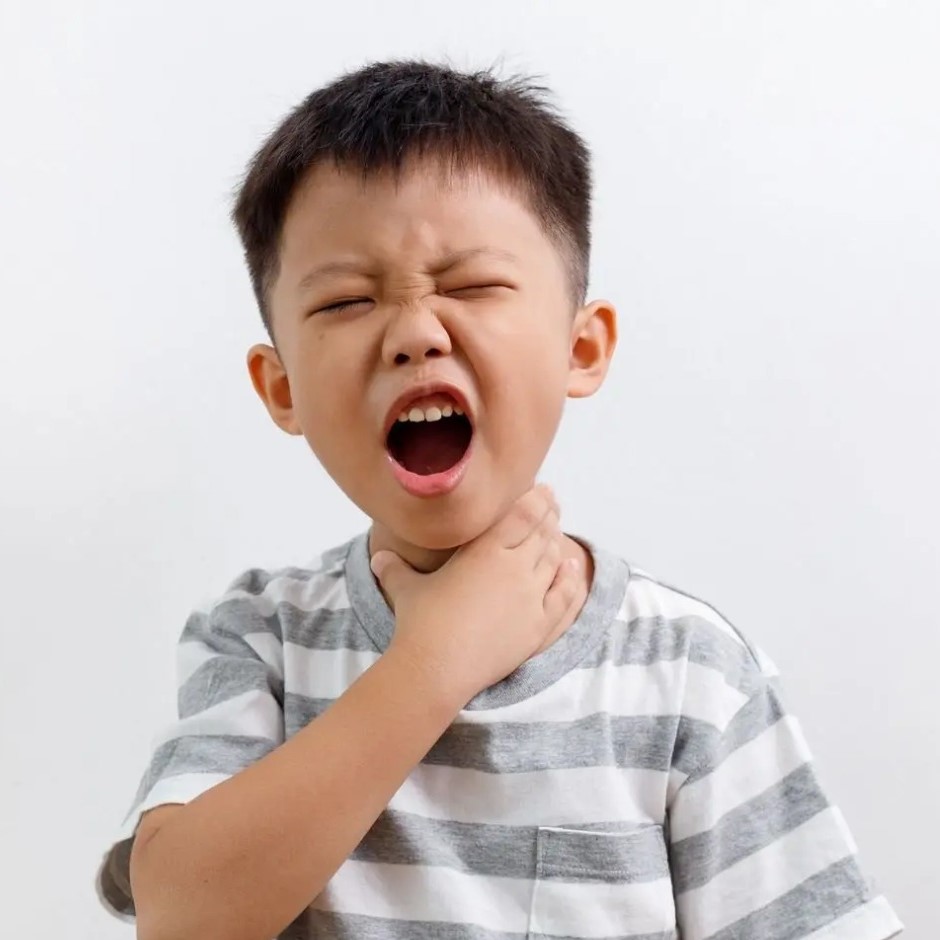A child with throat problems can present with throat discomfort, hoarseness, bad breath, decreased appetite, chronic cough or frequent throat clearing. Alternatively, you may have noticed a lump in your child’s mouth or tongue. An early ENT consult is advised if your child has the above symptoms.
Throat Conditions
Throat Procedures
Book an Appointment
At Adult and Child ENT Specialists, We are committed on providing Effective, Personalised & Holistic Care for all patients.
Throat Conditions
Tonsilitis
Tonsilitis is an infection of the tonsils and commonly affects school going children. Acute symptoms include throat pain, high fever, and difficulty swallowing. Your child’s tonsils will appear red and swollen, sometimes with a layer of white or yellow coating. Swollen lymph nodes may appear as well.
Treatment is with plenty of rest, pain relief, and ensure that your child stays well hydrated with liquids and soft foods. Antibiotics maybe prescribed in some cases. Most cases will resolve. Your child may require tonsillectomy if there are recurrent severe episodes of tonsilitis, chronic tonsilitis, or for enlarged tonsils causing airway obstruction.
Enlarged Tonsils
Your child may have enlarged tonsils at birth or the tonsils are enlarged due to infections. Most children with enlarged tonsils do not requirement treatment or tonsillectomy unless they show symptoms of airway obstruction (sleep apnea) or experience recurrent infections.
Chronic Cough
ENT causes of chronic cough in children include post nasal drip, nasal allergies, acid reflux or upper airway infections. Your child may require nasal endoscopy after history taking by Dr Soon. Reassure your child that the procedure does not hurt and is quick when performed by Dr Soon. Management will be targeted at the underlying cause.
Voice Disorders
Common voice disorders in children are a loss of voice after an upper respiratory tract infection, or you may have noticed voice strain, hoarseness, breathiness, raspiness or your child speaking too softly. Nasal endoscopy is performed by Dr Soon to visualise the movement of the vocal cords and to exclude lesions such as vocal cord cysts or nodules. Treatment includes changing your child’s vocal habits such as screaming and yelling, and to ensure that your child has adequate hydration, voice rest and to avoid too much sugars. Voice therapy which involves parents and children is recommended.
Tongue Tie (Ankyloglossia)
You may have noticed your child to have a short tongue, or have problems bottle feeding or in speech articulation. The lingual frenulum, a soft band of tissue attaching the tongue to the floor of the mouth, may be too short or tight restricting tongue movements. Proper assessment will be performed by Dr Soon before deciding if your child requires tongue tie release.
Oral cavity lesions
You may have noticed a fluid filled lump in your child’s inner surface of the lower lips or cheek. Do not attempt to burst it. These lesions are commonly mucoceles. Other causes may include a malformation, dermoid cyst or rarely a tumour. Remind your child not to traumatise the swelling further with their tongue, toothbrush or fingers. Excision biopsy for complete removal may be required.
Throat Procedures
Tonsillectomy
Tonsillectomy is a procedure performed with your child asleep to remove both tonsils through their mouth. The tonsils do not regrow after this surgery. It can be performed as a day surgery and recovery takes two weeks. Common indications in children include recurrent tonsilitis or to help with snoring and obstructive breathing during sleep (obstructive sleep apnea).
Current evidence suggests that tonsillectomy has no significant effect on the immune system in general. Not every child with enlarged tonsils will require tonsillectomy. Dr Soon will assess and recommend the appropriate treatment plan.
Tongue tie release
This procedure is done in selective patients to release the lingual frenulum. It is a simple procedure whereby the tongue is lifted and the lingual frenulum cut.
Excision biopsy
This procedure is performed with your child asleep and involves complete removal of lesions in your child’s throat. The wound will generally take a week to heal and histology results will be discussed with you.




